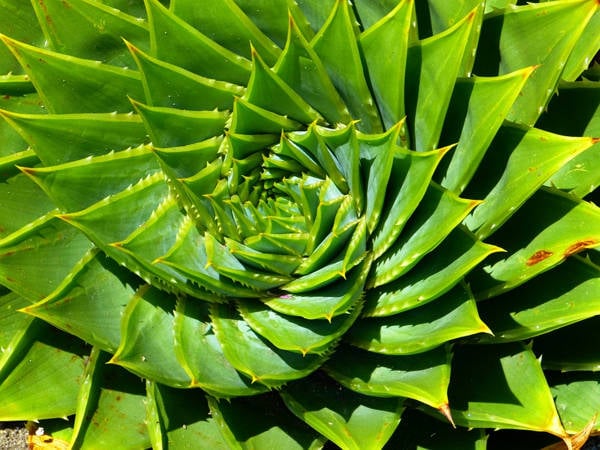

Take a look at a cauliflower next time you're preparing one: Charles Dills has noted that the Fibonacci numbers occur in Bromeliads and his Home page has links to lots of pictures.Ġ, 1, 1, 2, 3, 5, 8, 13, 21, 34, 55, 89, 144, 233, 377, 610, 987. Where n/t means there are n leaves in t turns or n/t leaves per turn.Ĭactus's spines often show the same spirals as we have already seen on pine cones, petals and leaf arrangements, but they are much more clearly visible. Some common trees with their Fibonacci leaf arrangement numbers are:Ģ/5 oak, cherry, apple, holly, plum, common groundsel One estimate is that 90 percent of all plants exhibit this pattern of leaves involving the Fibonacci numbers. The above are computer-generated "plants", but you can see the same thing on real plants. For the second plant it is 5/8 of a turn per leaf (or 3/8). We can write this as, for the top plant, 3/5 clockwise rotations per leaf ( or 2/5 for the anticlockwise direction). This time 3, 5 and 8 are consecutive numbers in the Fibonacci sequence. Notice that 2, 3 and 5 are consecutive Fibonacci numbers.įor the lower plant in the picture, we have 5 clockwise rotations passing 8 leaves, or just 3 rotations in the anti-clockwise direction. If we go anti-clockwise, we need only 2 turns. The number of turns in each direction and the number of leaves met are three consecutive Fibonacci numbers!įor example, in the top plant in the picture above, we have 3 clockwise rotations before we meet a leaf directly above the first, passing 5 leaves on the way. If we count in the other direction, we get a different number of turns for the same number of leaves. The Fibonacci numbers occur when counting both the number of times we go around the stem, going from leaf to leaf, as well as counting the leaves we meet until we encounter a leaf directly above the starting one. The computer generated ray-traced picture here is created by my brother, Brian, and here's another, based on an African violet type of plant, whereas this has lots of leaves. This means that each gets a good share of the sunlight and catches the most rain to channel down to the roots as it runs down the leaf to the stem. If we look down on a plant, the leaves are often arranged so that leaves above do not hide leaves below. These numbers, 34 and 21, are numbers in the Fibonacci series, and their ratio 1.6190476 closely approximates Phi, 1.6180339.Also, many plants show the Fibonacci numbers in the arrangements of the leaves around their stems.
The fibonacci sequence in nature full#
The DNA molecule measures 34 angstroms long by 21 angstroms wide for each full cycle of its double helix spiral.

DNA moleculesĮven the microscopic realm is not immune to Fibonacci. When a hawk approaches its prey, its sharpest view is at an angle to their direction of flight - an angle that's the same as the spiral's pitch. And as noted, bee physiology also follows along the Golden Curve rather nicely. Following the same pattern, females have 2, 3, 5, 8, 13, and so on. Thus, when it comes to the family tree, males have 2, 3, 5, and 8 grandparents, great-grandparents, gr-gr-grandparents, and gr-gr-gr-grandparents respectively. Males have one parent (a female), whereas females have two (a female and male). In addition, the family tree of honey bees also follows the familiar pattern. The answer is typically something very close to 1.618. The most profound example is by dividing the number of females in a colony by the number of males (females always outnumber males). Speaking of honey bees, they follow Fibonacci in other interesting ways.


 0 kommentar(er)
0 kommentar(er)
